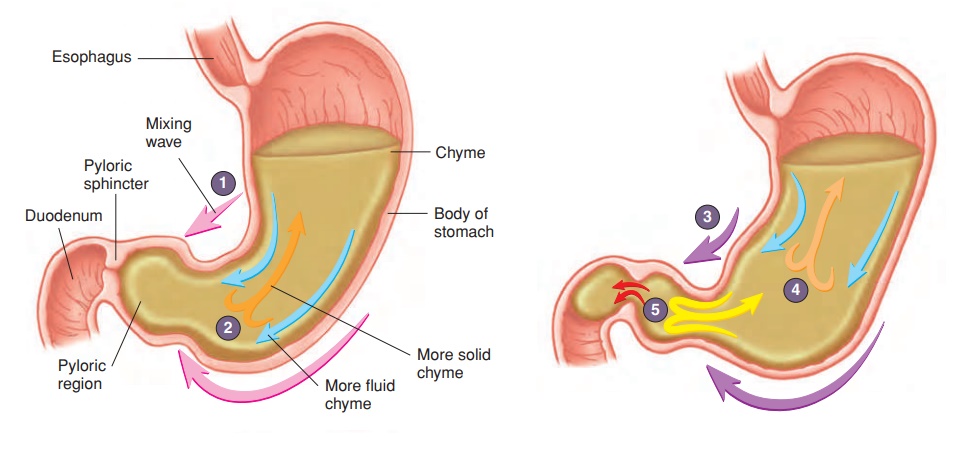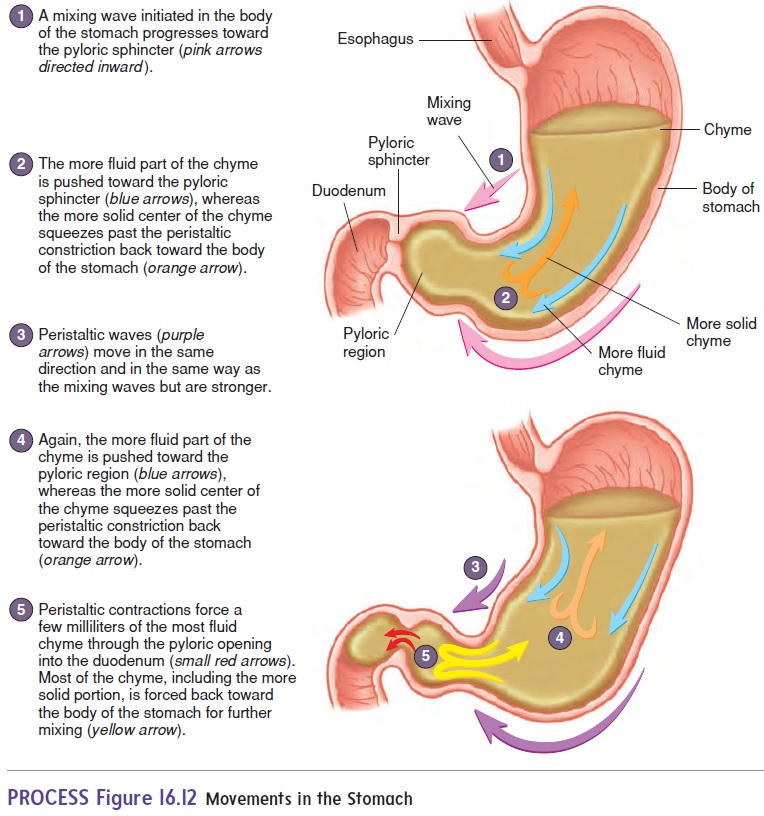Chapter: Essentials of Anatomy and Physiology: Digestive System
Movement in the Stomach

Movement In The Stomach
Two types of stomach movement aid digestion and help move chyme through the digestive tract: mixing waves and peristaltic waves (figure 16.12). Both types of movement result from smooth muscle contractions in the stomach wall. The contractions occur about every 20 seconds and proceed from the body of the stomach toward the pyloric sphincter. Relatively weak contractions result inmixingwaves, which thoroughly mix ingested food with stomach secretionsto form chyme. The more fluid part of the chyme is pushed toward the pyloric sphincter, whereas the more solid center moves back toward the body of the stomach. Stronger contractions result in peri-staltic waves, which force the chyme toward and through the pyloricsphincter. The pyloric sphincter usually remains closed because of mild tonic contraction. Each peristaltic contraction is sufficiently strong to cause partial relaxation of the pyloric sphincter and to pump a few milliliters of chyme through the pyloric opening and into the duodenum. Increased motility leads to increased emptying.

If the stomach empties too fast, the efficiency of digestion and absorption in the small intestine is reduced. However, if the rate of emptying is too slow, the highly acidic contents of the stomach may damage the stomach wall. To prevent these two extremes, stomach emptying is regulated. The hormonal and neural mecha-nisms that stimulate stomach secretions also increase stomach motility, so that the increased secretions are effectively mixed with the stomach contents. The major stimulus of gastric motility and emptying is distension of the stomach wall. Inhibition of gastric motility and emptying is accomplished by the same negative-feedback loops associated with the intestinal phase of gastric secretion. In particular, cholecystokinin is a major inhibitor of motility and emptying (table 16.2). Hence, stomach emptying is slower after a fatty meal due to the release of cholecystokinin.
In an empty stomach, peristaltic contractions that approach tetanic contractions can occur for about 2 to 3 minutes. The contractions are increased by low blood glucose levels and are sufficiently strong to create an uncomfortable sensation called a “hunger pang.” Hunger pangs usually begin 12 to 24 hours after the previous meal; in less time for some people. If nothing is ingested, hunger pangs reach their maximum intensity within 3 or 4 days and then become progressively weaker.
Related Topics